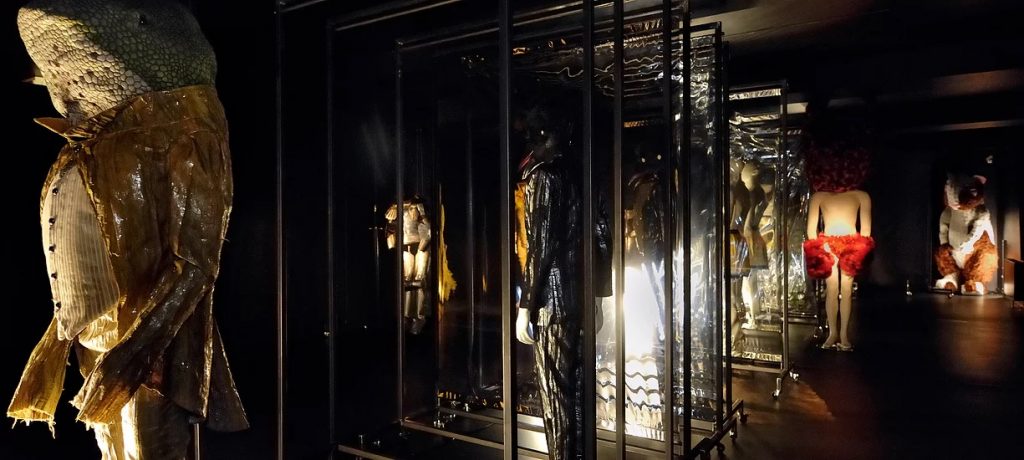Requested to Dance – Invited to Dance
The exhibition ‘Ten dansocht’ (Invited to Dance) offers an overview of dance costumes created by fashion designers and visual artists for Flemish and Brussels dance companies between 1920 and 2008.
From 1910 onwards, Sergeï Diaghilev brought his ballet company ‘Les Ballets Russes’ to Paris. With ‘Les Ballets Russes’, he ensured the breakthrough of great choreographers and composers. He also involved well-known Russian artists in his projects for designing sets and costumes. This was something completely new in the theater world of the time. Until then, sets and dance costumes had always been designed by set designers connected to the companies.
Due to the enormous success of his productions, other artists were also willing to work on the performances of Les Ballets Russes. Diaghilev collaborated with Pablo Picasso, Henri Matisse and Coco Chanel (Le train blue), among others.
This example in turn inspired other European ballet companies to collaborate with visual artists and fashion designers.
I went looking for these cross-pollinations in Flanders and Brussels from the beginning of the 20th century until now …
A few examples
James Ensor created the ballet “La Gamme d’Amour” for which he designed everything himself, from costumes and set to music and choreography.
Akarova & Baugniet and visual artists such as Anto Carte and Denis Martin worked together.
Jeanne Brabants worked with and was inspired by Mimi Peetermans and May Néama.
The Royal Ballet of Flanders called on Germinal Cassado, Walter Van Beirendonck and Jan Fabre, among others.
Fabre himself created many contemporary dance productions and made the designs for the dance costumes together with, for example, Daphne Kitschen and Pol Engels.
For her solo performance Once, Anne Teresa De Keersmaeker chose clothes designed by fashion designer Anke Loh.
Marc Vanrunxt worked with Robert Cash and chose pieces from the Martin Margiela collection for Anthropomorph.
Wim Vandekeybus invariably calls on Isabelle Lhoas.
For four months the Fashion Museum Hasselt was a stage for these and many other creations.
Composition: Kenneth Ramaekers
Scenography: Lien Wauters
Lighting: Jan Dekeyser (In-Vitro)
Consultancy: Jeanne Brabants, Rina Barbier and Katie Verstockt
Design: Brusatto
With thanks to: City of Hasselt, Municipal Executive, vzw De Vrienden van het Modemuseum, Employees of the Modemuseum Hasselt, Employees of the Central Workplaces of the City of Hasselt, Volunteers of the vzw De Friends of the Fashion Museum
Image courtesy of Modemuseum, Hasselt, Belgium.
